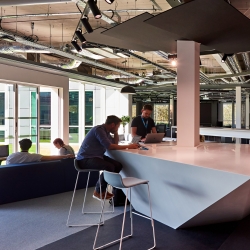To provide the best experiences, we use technologies like cookies to store and/or access device information. Consenting to these technologies will allow us to process data such as browsing behaviour or unique IDs on this site. Not consenting or withdrawing consent, may adversely affect certain features and functions.
The technical storage or access is strictly necessary for the legitimate purpose of enabling the use of a specific service explicitly requested by the subscriber or user, or for the sole purpose of carrying out the transmission of a communication over an electronic communications network.
The technical storage or access is necessary for the legitimate purpose of storing preferences that are not requested by the subscriber or user.
The technical storage or access that is used exclusively for statistical purposes.
The technical storage or access that is used exclusively for anonymous statistical purposes. Without a subpoena, voluntary compliance on the part of your Internet Service Provider, or additional records from a third party, information stored or retrieved for this purpose alone cannot usually be used to identify you.
The technical storage or access is required to create user profiles to send advertising, or to track the user on a website or across several websites for similar marketing purposes.
 Over a third of younger office workers forced to work from home feel remote, unfocused and less committed to their employers, posing a real threat to businesses in the medium and long term, new research from Oktra claims. Of 1,500 people surveyed, who used to work in an office full time but have been working at home for the last six months, the experience has changed the way that 71 percent of them feel about their employer; 85 percent have struggled with the experience of remote work. (more…)
Over a third of younger office workers forced to work from home feel remote, unfocused and less committed to their employers, posing a real threat to businesses in the medium and long term, new research from Oktra claims. Of 1,500 people surveyed, who used to work in an office full time but have been working at home for the last six months, the experience has changed the way that 71 percent of them feel about their employer; 85 percent have struggled with the experience of remote work. (more…)






 80 percent of us want to get back to the office, according to a new
80 percent of us want to get back to the office, according to a new 
 A new survey published by
A new survey published by 
 A new report from
A new report from 
 What impact is COVID-19 having on business confidence? And what recovery strategies are companies prioritising in response to the pandemic? Recruitment company
What impact is COVID-19 having on business confidence? And what recovery strategies are companies prioritising in response to the pandemic? Recruitment company 



















July 31, 2020
Return to work offers us a unique opportunity to change everything
by Simone Fenton-Jarvis • Comment, Facilities management